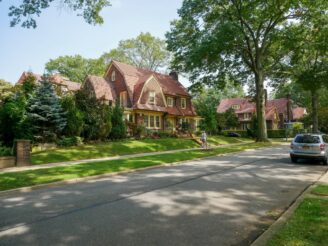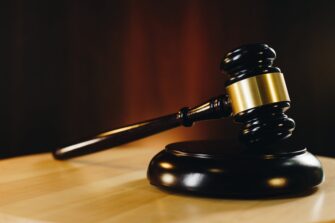Forest Hills Personal Injury Attorney

Forest Hills is about a 30-minute subway ride from Midtown, making it an attractive place for those who want to leave the bustle of Manhattan behind but hate a long commute.
Need a Personal Injury Attorney in Forest Hills?
Table of Contents
At Belluck Law, our top-ranked New York personal injury attorneys have more than two decades of experience securing full and fair compensation for people and families who have been harmed by the negligence of others. Our nationally recognized law firm has the resources and the skills to take on the most complex cases, and we do not back down from a courtroom battle.
Our Trial Attorneys Focus on Mesothelioma Claims
Mesothelioma is a deadly cancer whose only known cause is exposure to asbestos. For decades, companies used asbestos-containing materials in manufacturing plants, factories, commercial and residential buildings. These companies knew of the dangerous health effects, but they failed to warn the public.
Our New York City mesothelioma cancer attorneys at Belluck Law has a long track record of holding these companies accountable for the harm they have caused. We represent people and families whose lives have been forever changed by asbestos diseases such as mesothelioma, lung cancer and asbestosis across New York.
Award-Winning Lawyers Serving Forest Hills
Our New York personal injury attorneys are proud to have earned recognition from a number of professional legal publications and review services, including:
- The National Law Journal
- Best Lawyers
- Super Lawyers
- Martindale Hubbell
- Avvo
Our Top-Rated Law Firm Gets Results
At Belluck Law, we have extensive experience and a long track record of recovering maximum payments for our deserving clients. Our savvy legal team is proud to have obtained more than $1 billion in compensation both through aggressive settlement negotiations and impressive jury awards. Read more about our case results.
Our Legal Services
Our knowledgeable attorneys handle a wide range of complex personal injury cases involving:
- Defective products
- Dangerous pharmaceuticals
- Asbestos diseases
- Construction accidents
- Workplace accidents
- Slip and fall accidents
- Nursing home abuse
- Car accidents
- Motorcycle wrecks
- Truck accidents
- Dog bites
- Wrongful death
Key Features of the Area
The million-dollar, hundred-year-old Tudor-style homes of Forest Hills Gardens, a planned garden city community, are a jewel of this neighborhood. But Forest Hills overall is known for its single- and multi-family homes and blend of an urban vibe with a suburban lifestyle. Austin Street, a major thoroughfare, is known for its eclectic blend of food, drink, secondhand stores and boutiques.
Forest Hills has long had a tradition of tennis, thanks to the West Side Tennis Club moving here from Manhattan in 1914. Forest Hills Stadium hosted the U.S. Open until 1978. The venue at 1 Tennis Place is now a renovated 14,000-seat concert venue.
Golfers can enjoy the 110-acre course in Forest Park. Although divided by Woodhaven Boulevard and the Interborough Parkway, the park is one of New York City’s natural treasures and the third largest in Queens, with a continuous oak forest and kettle ponds for bird watching.
Forest Hills also has several landmarks on the National Register of Historic Places. These include the Church-in-the-Gardens, a Community Congregational Christian Church designed in Tudor Revival style by architect Grosvenor Atterbury, and the U.S. Post Office Forest Hills Station, a one-story flat-roofed building clad with reddish brown terra cotta and relief sculptures.
Brief History of Forest Hills
1890s: Development begins in Forest Park, a park on the southern end of the future Forest Hills.
1906: The Queensboro Bridge inspires Cord Meyer Development Company to buy farmland adjacent to Forest Park for single-family homes, renaming the area Forest Hills after the name of the park.
1908: Margaret Sage, founder of the philanthropic Russell Sage Foundation, buys 142 acres from the Cord Meyer Development Company to develop Forest Hills Gardens, a neighborhood modeled after England’s garden communities.
1911: The Long Island Rail Road opens a station in Forest Hills. The Queens Boulevard trolley line opens two years later, leading to further expansion and connections to Manhattan.
1915 to 1977: Forest Hills hosts the U.S. Open tennis championships.
1970s to 1980s: Middle-class residents protest the proposed construction of public housing in Forest Hills. Future New York Gov. Mario Cuomo, then a lawyer, mediates the dispute. The New York Housing Authority implements a rigorous screening process for tenants. More housing covenants for prospective residents are lifted, leading to more immigrants from the Soviet Union, Iran, India and Israel.
2010: The population of Forest Hills is about 86,000, according to the U.S. Census.
Location
Forest Hills is adjacent to Rego Park. It sits between the Long Island Expressway to the north and the Union Turnpike to the south. To the east is Grand Central Parkway, with 102nd Street, 67th Avenue and Selfridge Street to the west.
Interesting Facts About Forest Hills
- Spider-Man, aka Peter Parker, hails from Forest Hills. Marvel comics originally listed the address of the wall-crawling web-slinger and his beloved guardian, Aunt May, on Ingram Street.
- The border between Forest Hills adjoining Rego Park has many Bukharan Jews, a branch of the Jewish religion from Central Asia and one of the largest such populations in the world outside of Israel.
- Data from the Center for an Urban Future in shows that Forest Hills, Kew Gardens and Rego Park have a high percentage of employed residents who work from home, about 4.4 percent compared to the city’s average of 3.9 percent.
Directions to Belluck Law from Forest Hills
Belluck Law’s Manhattan law office is located in Midtown at 546 Fifth Ave., 5th Floor, New York NY 10036. From Forest Hills, take Queens Boulevard northwest to the Long Island Expressway (I-495) west into Manhattan. From the downtown exit, follow signs for Uptown/38th Street, then turn right onto Third Avenue. Turn left onto East 47th Street, then left again onto Fifth Avenue.
Our office also is accessible via public transportation. Take a Coney Island-bound F train from the Forest Hills/71st Avenue station to 47th-50th Streets/Rockefeller Center.